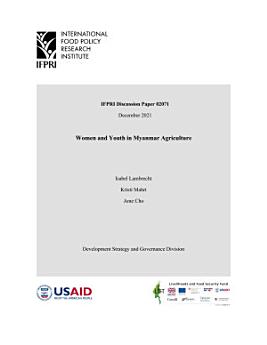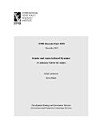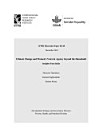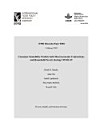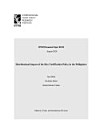Women and youth in Myanmar agriculture
Lambrecht, Isabel · Mahrt, Kristi · Cho, Ame
Dez 2021 · IFPRI Discussion Paper Buch 1 · Intl Food Policy Res Inst
E-Book
38
Seiten
family_home
Zulässig
info
reportBewertungen und Rezensionen werden nicht geprüft Weitere Informationen
Über dieses E-Book
Women’s and youth’s roles in agriculture vary across contexts and over time. Limited quantitative information is available on this topic from Southeast Asia in general, and particularly from Myanmar. We use nationally representative data to document women’s and youth’s involvement in agriculture in rural Myanmar. First, we show that women and youth contribute substantially to agriculture. Women in farm households perform 39 percent of household farm labour days, and 43 percent of agricultural wage workers are women. Twenty-seven percent of adults performing household agricultural work are youth and 22 percent of agricultural wage workers are youth. Yet, women’s farm wages are 29 percent lower than men’s farm wages. Youth’s farm wages are 17 percent lower than farm wages of non-youth for men, but we don’t find similar wage differences for women. Second, we find a significant gender gap in land rights, but the share of women who have land rights is still sizable. Nineteen percent of adult men are documented landowners compared to seven percent of adult women. Few youth have land rights, but the likelihood increases with age. Third, we explore cropping patterns. No crops are grown exclusively by men or women, but rice is more often and vegetables are less often cultivated by households where men are the sole agricultural decision makers. Finally, we focus on access to credit. Women receive loans less often than men (21 percent vs. 26 percent) and youth rarely receive loans (4 percent). Women’s loans are more often aimed at alleviating basic needs, such as food and health expenditures. Men’s loans are more often aimed at investment in productive activities, especially farming. The evidence suggests that including men, women and youth equally in agricultural projects and policy making is critical to advance equity and achieve development goals.
Dieses E-Book bewerten
Deine Meinung ist gefragt!
Informationen zum Lesen
Smartphones und Tablets
Nachdem du die Google Play Bücher App für Android und iPad/iPhone installiert hast, wird diese automatisch mit deinem Konto synchronisiert, sodass du auch unterwegs online und offline lesen kannst.
Laptops und Computer
Im Webbrowser auf deinem Computer kannst du dir Hörbucher anhören, die du bei Google Play gekauft hast.
E-Reader und andere Geräte
Wenn du Bücher auf E-Ink-Geräten lesen möchtest, beispielsweise auf einem Kobo eReader, lade eine Datei herunter und übertrage sie auf dein Gerät. Eine ausführliche Anleitung zum Übertragen der Dateien auf unterstützte E-Reader findest du in der Hilfe.
